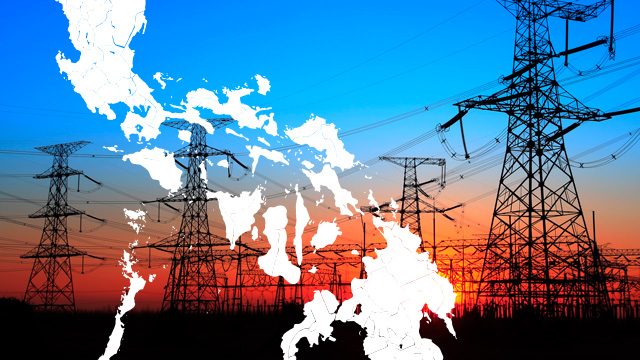SUMMARY
This is AI generated summarization, which may have errors. For context, always refer to the full article.

The Marrakech climate change conference, the 22nd session of the Conference of the Parties of the United Nations Framework Convention on Climate Change, ended in a high note. The Marrakech Action Proclamation for our Climate and Sustainable Development signals a shift towards a new era of implementation and action on climate and sustainable development.
According to the Proclamation: “The Marrakech Conference marks an important inflection point in our commitment to bring together the whole international community to tackle one of the greatest challenges of our time. As we now turn towards implementation and action, we reiterate our resolve to inspire solidarity, hope and opportunity for current and future generations.”
Governments hailed the Paris Agreement, noting its rapid entry into force and its ambitious goals. The Proclamation acknowledged the great momentum on climate change worldwide, a momentum that is unstoppable, driven by governments, science, business, global and local actors.
In a parallel meeting in Marrakech, the Climate Vulnerable Forum, which includes the Philippines, committed “strive to meet 100% domestic renewable energy production as rapidly as possible, while working to end energy poverty and protect water and food security, taking into consideration national circumstances.” They promised “to help each other with our respective transition plans to transform our energy, transport and other sectors, and together ensure support is made available in terms of capacity building, financing and technology.”
This CVF call is exactly right for the Philippines.
While President Duterte has already announced his decision to ratify the Paris Agreement, the Department of Energy (DOE) is not yet on board. This is because Energy Secretary Alfonsi Cusi is concerned that the department will not be able to fulfill its mandate to ensure energy security for the country if we implement the Paris Agreement.
In our view, this is a misappreciation of the Paris Agreement. In fact, if implemented properly, the Paris Agreement will lead us to a more energy secure future.
Moving forward, when we ratify the Paris Agreement, we should accompany it with a declaration that the Intended Nationally Determined Contribution we submitted in Paris is not yet final. The wording of that commitment actually implies that but we should be explicit that we will finalize our reduction number by 2018 after a bottom up process where government departments will submit their contributions to the mitigation commitment based on their respective numbers. That should give comfort to the DOE whose first order of priority should be to ensure sustainable and energy access for everyone in our country, for the private and business sector and for poor and local communities. To achieve that, the right way forward is implementing an optimal energy mix.
Toward an optimal energy mix
In the past months, much has been said and is being done about the country’s optimal energy mix.
The government has called for a review of the unofficial but widely known 30 coal-30 natural gas-30 renewable energy-10 oil energy mix policy to assess whether it meets quality, security, reliability, and affordability – the foremost considerations of this administration.
The current energy mix is composed of coal, renewable energy, natural gas, and oil. Coal appears to be highly favored because it is the cheapest (at least for now) despite opposition mostly from environmental groups. The supply of indigenous natural gas is under threat because of the depletion of the Malampaya reserves.
Renewable energy (RE) (at least solar and wind) costs are rapidly decreasing while the feed-in tariff allowance charged to consumers has surged by 200% (and still faces the possibility of increasing). These are some of the numerous issues facing the varying energy sources of the country amidst the national objective of achieving a rebalanced high-income economy by 2040.
“Optimizing our Energy Mix”, part two of the three-part policy brief series “Getting Our Act Together”. zeroes in on the importance of energy in economic growth, and how an energy mix policy can support that growth. The brief reviews the current energy mix of the country using the internationally accepted standards of the energy trilemma (security, equity, and environmental sustainability). Afterwards, it advocates initial steps for an easier transition towards an energy mix characterized by security, equity, and environmental sustainability.
The country’s energy mix is dominated by coal at 44.51%.
In the short term, coal addresses security (the resource and the power plants are accessible and available) and equity (it is cheap at Php 2.9 to Php 3.5 per kWh) but not sustainability (its external cost to the environment and health is Php 2.78 to 2.82 per kWh). In the long-term, coal fails to satisfy all three components of the energy trilemma. Majority of the coal is imported, and 70% is imported from just one country (due to the lower freight cost). It is more expensive when operated at less than 60% capacity factor (specifically its cost increases to Php 4 to Php 4.8 per kWh).
Still, the country expects a coal-dominated future (with 54% coal in the capacity mix and 66% coal in the energy mix by 2022). This compromises energy security, equity, and sustainability.
Following coal in the energy mix is total RE at 25.44% comprising both of conventional (hydropower and geothermal power) and emerging (solar, wind, run-of-river hydro, and biomass) RE. In the short term, RE addresses sustainability but not security (due to its intermittency and uncertainty) and equity (at least for emerging RE since the cost is pegged to the feed-in tariff rate).
In the long term, RE satisfies all three components of the energy trilemma. Advancements in RE (i.e. capture, collection, and storage technology) have emerged to cope with intermittency and uncertainty. Also, quick developments in technology are bringing the cost of emerging RE down (solar and wind are expected to decrease to about Php 4 per kWh and Php 3 per kWh respectively by 2020). This is followed by the question of whether or not FIT is still needed for solar and wind. It is important to note that conventional RE, which makes up 23.92% of the RE share in the energy mix, has not received any subsidy.
The third largest share in the energy mix is natural gas at 22.91.
In the short term, natural gas addresses the energy trilemma. It is sourced locally, is ideal as a mid-merit plant because of its flexibility, and can compete with coal when the latter is operated at less than 60% capacity factor. It also produces only one-third of the carbon emissions of coal. In the long term, natural gas fails to satisfy energy security (because the country will have to import natural gas once Malampaya is depleted), environmental sustainability (since it is after all a fossil fuel), and possibly equity (just like imported coal, imported natural gas exposes energy supply and price to volatile international market conditions).
The smallest percentage share of the energy mix is oil-based technology at 7.14%. In both the short and long term, oil based technologies fail to address the energy trilemma. Oil is imported. It is the most expensive among the fossil fuels, and its price is extremely volatile. Moreover, it is at par with coal when it comes to greenhouse gas emissions. Still, oil plants are vital because they serve missionary areas and satisfy the peaking requirements of the country’s portfolio (although simple cycle gas plants may equally be capable of doing so.)
Addressing the energy trilemma

Considering the Philippines’ growth objectives, the government’s mandate to establish an energy mix that addresses the trilemma, and the current energy mix, it becomes clear that government’s priority should be to diversify.
Three immediate courses of action are required:
- Reduce overdependence on coal to address security and efficiency issues (insofar as coal plants that do not operate as baseload and/or operate at less than 60% capacity factor);
- Increase, if not maintain, the share of natural gas (since it addresses the duck curve caused by intermittent RE); and
- Set the stage for a flexible environment to capitalize on swift market and technological changes in RE.
Optimizing the coal share in the energy mix and reducing the use of imported coal can be done through the following policies.
First, set a cap on coal plant endorsements using a portfolio based approach. This can be done by limiting the endorsements of new coal plants to the projected baseload demand of each region taking into account the changing needs of the economy.
Second, create a gold standard for coal plants. The gold standard for existing plants would be in the form of (1) performance guards because as coal plants age they become more inefficient and thus more expensive, and (2) implementation of Sec. 13 and 19 of the Clean Air Act. For new plants, the gold standard can be a policy that only ultra-supercritical plants can be built.
Third, compliance of new plants with BOI environmental criteria set in the Investment Priorities Plan and BOI Memorandum Circular 2015-01.
Allowing natural gas to compete
Once coal’s share is reduced, natural gas will be allowed to compete and optimize the mid-merit or at the very least, maintain its share in the current energy mix given the expected depletion of the Malampaya reserves.
First, a comprehensive natural gas policy and legislative framework has to be legislated to attract private sector investment. There is a natural gas bill filed in the Senate. Hopefully it will be enacted into law, unlike natural gas bills in the past Congresses.
Second, support for the construction of natural gas infrastructure has to be given. A low hanging fruit would be streamlining and fast tracking the processing of applications for permit for the construction, expansion, operation, maintenance and modification of pipelines, transmission and distribution related facilities of natural gas.
Third, other indigenous natural gas resources have to be explored, developed and produced, and each Philippine Energy Contracting Round (PECR) has to be swiftly resolved. An existing roadblock to the past PECR (and any future PECR) is the tax issue of the Malampaya consortium with the Commission on Audit.
Reducing overdependence on one energy source increases the flexibility to take advantage of rapid RE developments. Increasing both conventional and emerging RE can be done through the full implementation of policies in the RE Act, which include net metering, FIT, renewable portfolio standards, and the green energy option.
Also, incentives and government assistance for development and construction of conventional RE can be provided. Nuclear power can be explored as a new resource in the energy mix since it is reliable and efficient, and can counter the intermittency of variable RE. However, there is a high set-up cost and long-term skill base required for nuclear plants, while special precautions must also be undertaken to avoid any radioactive leaks and/or accidents.
All of these set the stage towards achieving a quality, reliable, affordable, and more sustainable energy mix, which can be easily adjusted to meet innovations in technology, and even unexpected changes in economic growth and population.
It is the responsibility of the government to provide these aforementioned policy directions as it works with the market (contrary to the view of letting the market decide) in order to attain a high-income economy, and energy security, equity, and sustainability.
It’s time to ratify and implement the Paris Agreement. For energy, we begin with aiming for an optimal energy mix. – Rappler.com
This is the second of a three-part series on climate change and energy. The articles are based on policy briefs produced under the “Getting our Act Together,” project of the Ateneo School of Government in partnership with SSG Advisors. This project was designed to contribute to the discourse on Philippine climate and energy policies as the country tries to balance its economic growth targets with the exigencies of sustainable development.

Tony La Viña is former dean of the Ateneo School of Government. He served as spokesperson of the Philippine delegation to the Paris talks in 2015.
Teresa Ira Maris (Tim) P. Guanzon is currently the Senior Policy Advisor of the Reform Energy Project. She is a lawyer who specializes in public policy with a special interest in energy.
Lawrence Ang (left photo) is Director for Asia for SSG Advisors – a global development solutions firm and impact investment advisory. He brings nearly ten years’ experience at the nexus of sustainable development and private sector engagement in the region.
Add a comment
How does this make you feel?





There are no comments yet. Add your comment to start the conversation.